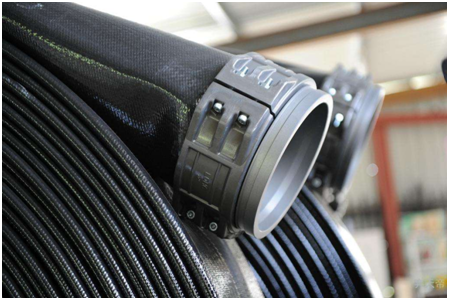Integration solutions and practices of industrial waste conveying hoses in automated production line
2025-07-28 10:22:02
In the industrial production process, the effective transportation of waste is an important part to ensure the smooth operation of the production line. As the key equipment in this link, the blockage and wear of the conveying hose often lead to a decrease in production efficiency or even shutdown, causing losses to the enterprise. Therefore, understanding how to solve these problems is crucial to improving the overall efficiency of industrial production. This article will explore in depth how to effectively deal with the blockage and wear problems of industrial waste material conveying hoses, and provide detailed solutions and specific measures.
1. Working principle of industrial waste material conveying hoses
Conveying hoses are usually used to transport industrial waste from one location to another, and are commonly found in factories, mining areas and waste treatment facilities. They are usually made of wear-resistant and corrosion-resistant materials, and have different diameters and lengths to choose from according to different conveying needs. The working principle of the hose is relatively simple: the waste is pushed into the hose through a pump or other equipment, and the waste is transported to the destination by gravity or airflow.
2. Reasons for the blockage of conveying hoses
2.1 Material properties
The types of waste transported are diverse, and may contain many solid particles, liquids and gases. Some materials such as mud, sludge, and particles are easy to settle or adhere in the pipeline, causing the conveying hose to become blocked.
2.2 Improper operation
Improper operation and unreasonable setting of conveying parameters will reduce the conveying efficiency and increase the possibility of blockage. For example, if the conveying speed is too fast, the material will rebound and affect the fluidity.
2.3 Hardware facility problems
Old or damaged conveying equipment will also affect the fluidity and even cause the material to accumulate in the hose, causing blockage.
3. How to solve the blockage that has occurred
3.1 Easy dredging
For minor blockages, simple dredging tools such as pipe cleaners and pneumatic dredgers can be used to manually or automatically drive out the materials.
3.2 Cleaning system
For more serious blockages, it is recommended to clean the system and use a high-pressure water gun or chemical cleaner to clean the conveying hose to clean the accumulated waste and sediment.
3.3 Replace damaged parts
If the hose has been severely worn or damaged, it is recommended to replace the damaged parts in time to prevent affecting the overall conveying efficiency.
3.4 Use efficient cleaning agents
During the cleaning process, you can consider using some special cleaning agents, which can effectively decompose waste materials and help speed up cleaning efficiency.
4. Reasons for wear of conveying hoses
4.1 Material properties
During the conveying process, the material and the inner surface of the hose are constantly rubbed, causing the hose to wear, especially when conveying materials with sharp edges or hardness, the wear phenomenon is more significant.
4.2 Violent movement of the conveying fluid
Violent movement of the fluid during the conveying process will increase the wear on the hose, thereby shortening its service life.
4.3 Bending and stretching
When the conveying hose is working, the bending and stretching it is subjected to will also cause wear. Especially when the bending radius of the hose is too small, the wear is more serious.
5. How to prevent wear
5.1 Choose highly wear-resistant materials
When choosing a conveying hose, you can choose some highly wear-resistant materials, such as hard polyurethane, rubber, etc. Not only can it improve the wear resistance of the hose, but it also helps to extend its service life.
5.2 Control flow rate
The material conveying flow rate should also be reasonably controlled to reduce friction with the hose and avoid wear caused by excessive flow rate.
5.3 Reduce the bending of the hose
Rationally plan the layout of the conveying hose to avoid stubborn bending. For places where bending is necessary, accessories such as elbows or joints can be used to reduce the bending radius.
5.4 Regularly replace the hose
Even if a series of preventive measures are taken, the importance of regular hose replacement cannot be ignored. According to the usage, a scientific replacement cycle should be formulated to ensure that the equipment operates in the best condition.
In the process of industrial waste transportation, the blockage and wear of the hose are links that cannot be ignored. By reasonably selecting materials, strengthening maintenance and management, and promptly dealing with blockage and wear, the transportation efficiency can be significantly improved, the production downtime can be reduced, and greater value can be created for the enterprise. In this field, continuous attention to the development of science and technology and full use of new technologies will surely bring new opportunities and challenges to the industrial waste transportation industry.